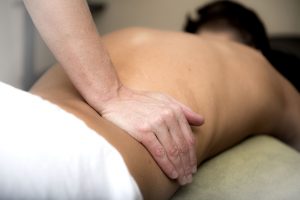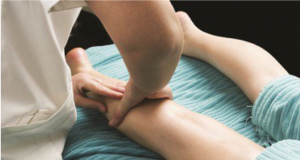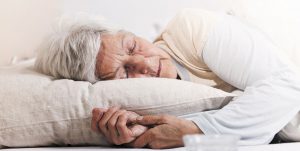Shin Splints or Compartment Syndrome?
One of the most common overuse injuries affecting the lower extremity is the condition known as shin splints. While the term shin splints routinely is used, especially among the athletic population, it does not represent a specific clinical pathology.
Instead, it describes chronic shin pain resulting from overuse. It occurs in two regions of the leg. When it occurs in the proximal anterior lateral region of the leg, it’s called anterior shin splints. It’s also seen regularly in the distal medial region of the leg, where it’s called posterior shin splints or medial tibial stress syndrome (MTSS). This discussion focuses on anterior shin splints, which routinely is confused with another overuse condition of the lower leg called anterior compartment syndrome.
Anterior shin splints are attributed to overuse of the dorsiflexor muscles, such as the tibialis anterior, extensor digitorum longus and extensor hallucis longus. Overuse results from excessive eccentric loading on the dorsiflexors. An example is walking or running downhill. With anterior shin splints, the client reports a history of repetitive activity performed on a regular basis or a sudden increase in activity levels. Pain is felt in the anterior lateral region of the leg near the proximal tibialis anterior attachment. The client with shin splints routinely reports pain at the beginning of an activity that gradually subsides with use, only to return after activity has ceased. The pain is like delayed onset muscle soreness by coming on hours later, even at rest.1
Anterior compartment syndrome sometimes occurs as an acute injury from a direct blow to the lower leg. However, it’s more commonly a chronic condition resulting from overuse, such as running on a hard surface or suddenly changing the intensity of training. The condition often is referred to as exertional compartment syndrome (ECS) if it results from changes in training intensity.
Muscles of the extremities performing similar functions are enclosed within fascial compartments separating them from other muscles. Repetitive overuse of these muscles causes these tissues to swell, increasing compartmental pressure. Subsequently, the deep peroneal nerve and tibial artery or vein are squeezed within the compartment. Ceasing the offending activity allows symptoms to subside immediately. Anterior compartment syndrome and shin splints frequently are confused because symptoms are felt in the same region of the lower leg.2
Clients with exertional compartment syndrome will describe a repetitive activity performed on a regular basis. The client also might report a sudden increase in activity levels preceding the onset of symptoms. For example, chronic compartment syndromes often develop in military recruits when they begin basic training and their activity levels are drastically increased.3 Symptoms might include aching lower leg pain, paresthesia, coldness in the feet, color changes in the distal lower extremity, or motor impairment to the dorsiflexor muscles, in more extreme cases. The more pressure within the compartment, the worse the symptoms will be.
With a compartment syndrome, symptoms increase as the client engages in the aggravating activity. Once the activity is ceased, symptoms generally subside within about 30 minutes as compartmental pressure returns to normal. The reduction of symptoms when activity is ceased is one way to distinguish compartment syndrome from shin splints. Although there might be some initial soreness, shin splint pain characteristically increases after the activity with delayed onset soreness.
Compartment syndromes usually produce pain with palpation only if the compartmental pressure is elevated, such as right after the activity, while shin splints likely are to be tender to palpation long after activity has ceased. Shin splints produce pain with stretching and manual resistance (resisted dorsiflexion). Compartment syndrome is not as likely to be painful with either manual resistance or stretching because neither of these maneuvers increases the intracompartmental pressure. If paresthesia is present, compartment syndrome should be suspected because this is a symptom of nerve involvement and there is no nerve pathology in shin splints.
Both conditions affect the same region of the body and result from similar patterns of overuse. However, it’s crucial to make a distinction between the conditions because treatment strategies for each differ. The only way to accurately identify the crucial differences between these similar conditions is with a comprehensive and thorough examination process.
References
- Couture CJ, Karlson KA. Tibial stress injuries. Physician Sportsmed. 2002;30(6).
- Lowe W. Orthopedic Assessment in Massage Therapy. Sisters, Oregon. Daviau-Scott; 2005.
- Almeida SA, Williams KM, Shaffer RA, Brodine SK. Epidemiological patterns of musculoskeletal injuries and physical training Med Sci Sports Exerc. 1999;31(8):1176-1182
Ready to #feelbetter?
You're just a click away from a wicked good massage!
-

60 Minute Massage Gift Card
$170.00 Add to cart -

90 Minute Massage Gift Card
$255.00 Add to cart -

Mini Aer Small Room Air Purifier
$149.00 Add to cart -
Sale!

Thera-Pearl Sports Pack/Hot Cold
Original price was: $14.99.$12.99Current price is: $12.99. Add to cart -

3 Somadome Sessions Gift Card
$135.00 Add to cart -
Sale!

TheraBand® Stretch Strap
Original price was: $19.99.$14.99Current price is: $14.99. Add to cart -

20 Minute Somadome Gift Card
$45.00 Add to cart -

TheraBand CLX Connective Loop
$14.99 Select options
Energy Boosters
Energy Boosters Ways to Get You Through the Day No amount of coaxing, pleading, or pedal pumping could get the engine in the rental car to turn over. It was going nowhere. The travelers had filled the car with unleaded fuel, but it had a diesel engine. It had been able to run a little…
Read MoreWhat is Qi?
What is Qi? A fundamental concept of traditional Chinese medicine (TCM) dating back over 3,000 years, qi (pronounced “chee”) is the Chinese word for energy, which also carries with it connotations of “air,” “breath,” and “life force.” In TCM, it is understood that everything from humans and animals to rocks and trees is filled with…
Read MoreWhy Buy Organic?
Why Buy Organic? Is the Higher Price Worth It? While shopping in your grocery store’s produce section, you may notice the organically grown apples are pocked and not as big and perfectly round as the conventional produce, but they are more expensive. What’s the difference, and which do you choose? Your decision may significantly impact…
Read MoreAre You Making the Most of Your Massage?
Are You Making the Most of Your Massage? How to Prolong the Benefits of Bodywork A massage works in wonderful ways, easing stress and pain, calming the nervous system, increasing circulation, loosening tight muscles, stimulating internal organs, and enhancing skin. The multiplicity of physiological responses sends a simple, clear message to the mind: Massage feels…
Read MoreThe Case for Chocolate
The Case for Chocolate New Studies Show Health Benefits It’s not like we need a specific reason to eat chocolate, but it doesn’t hurt that studies are finding increasing health benefits associated with the popular indulgence. While chocolate is high in sugar and saturated fat, it does contain chemical compounds with proven benefits, so enjoy–in…
Read MoreThe Wonders of Water
The Wonders of Water For Skin Health and More Shelley Burns, N.D. Creams, nutritional supplements, treatments, lotions, and potions. We are always looking for the next miracle product to keep skin looking healthy and young. However, there is one essential, inexpensive, and often overlooked nutrient right at your fingertips:water. Just as a car cannot function…
Read MoreInvest In Your Health
Invest in Your Health Massage Offers Excellent Return onInvestment “Invest for the long term” is great financial advice, but it’s also great healthcare advice. Never is investing for the long term more important than when you are making day-to-day decisions about your health. There are short-term gains from taking care of your health, to be…
Read MoreLife Hack: Iced Cubes
Life Hack: Coffee Cubes (Redux) As usual in New England, we have gone from Winter to Summer, with Spring being an absentee season (again). Since it feels like Summer is already here, I thought it best to give you a Life Hack that is an oldy, but a goody! Iced Coffee…..CUBES! #mindblown Yes. I have offered this…
Read MoreMake a Great Save to Avoid Back Pain
Make a Great Save to Avoid Back Pain 7- Stretches in 7-Minutes I was speaking the other day with one of our therapists and we were discussing our role in helping our patients. I was explaining that a comment I often tell new patients is; “These are hands, not magic wands”. Patients often seek out…
Read MoreTime for Sleep
Time for Sleep As a nation, we may be divided, but there is one common bond that unites us all around the world; sleep. We all need sleep in order to be capable of performing every day tasks. Sleep is an imperative part of the human experience. Without a good night’s sleep, our bodies will slowly…
Read More









